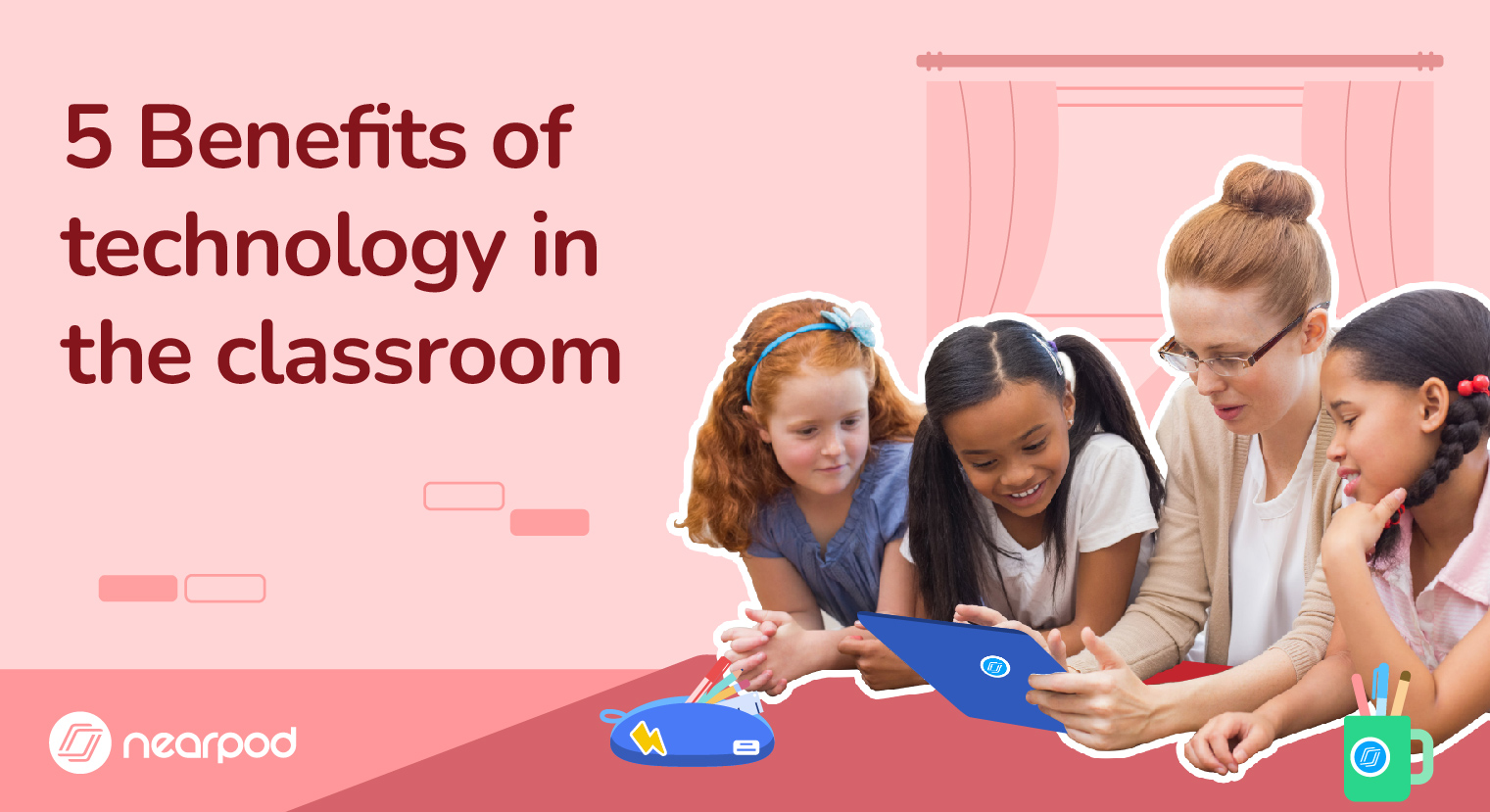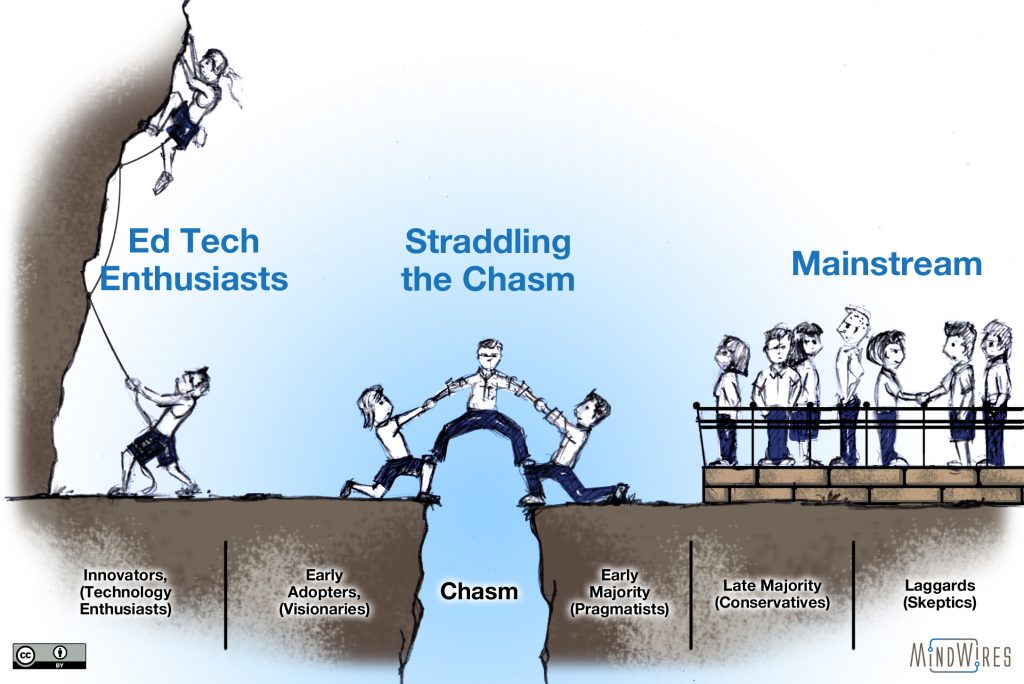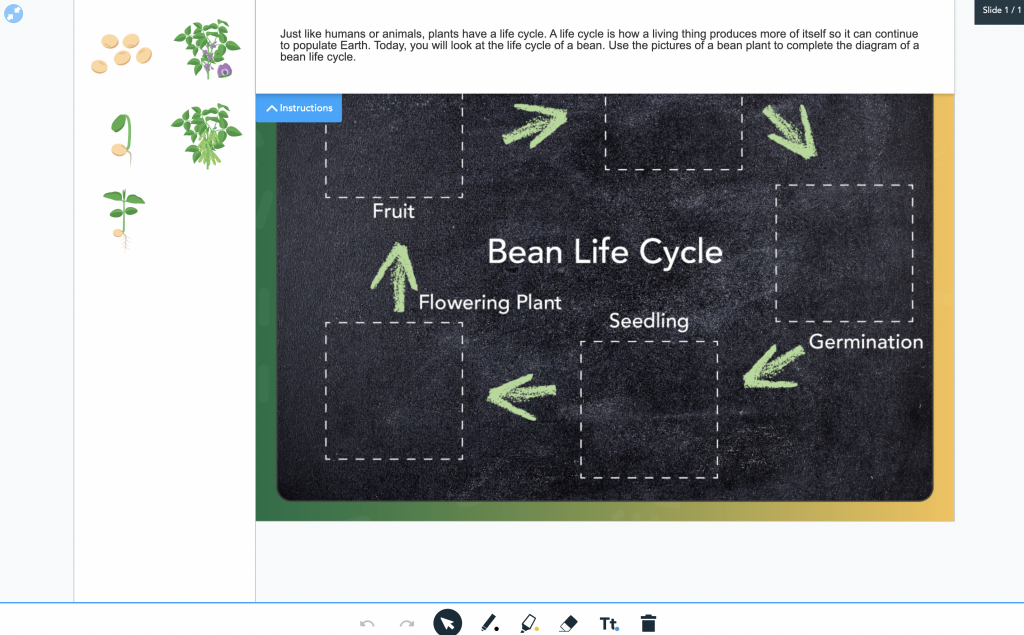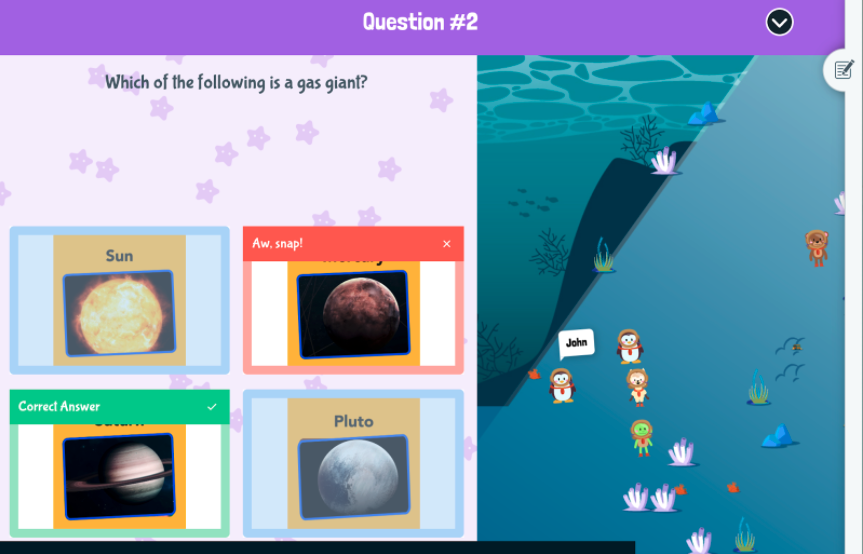
5 Benefits of technology in the classroom
What are the benefits of technology in the classroom? While it can be interesting to look at the current state of technology in the classroom, once you blink the landscape has most likely changed. Think back to the state of technology when you were a student, and you may have fond memories of sophisticated calculators, the Oregon Trail, or Mavis Beacon. Nearpod itself has already been a teacher favorite for more than ten years with the mission of creating meaningful learning experiences. So what is the future of technology in the classroom? What does it mean for teachers and classrooms to adopt and embrace the latest and the greatest from the edtech world?
How has COVID impacted technology in the classroom?
While a March survey by the EdWeek Research Center reported that almost half of the 386 teacher respondents felt that their ability to use technology during the 2020-2021 school year had “improved a lot,” many laments noted that it was a bit of a firehose of “new” due to the dire situation. Teachers reported being tech fatigued between personal and professional use. Whether referred to as screen fatigue, digital fatigue, or technostress, the burnout was real as teachers faced exhausting and stressful hours adjusting to the parameters of hybrid and remote learning. As a result, it’s important to prioritize supporting teachers’ well-being.
For too long, tech companies have focused on what was defined as “early adopters,” educators that traditionally were more likely to jump into “the new.” Now, ed-tech providers are being more cognizant of reaching all educators to provide a deeper, more meaningful experience with said tools and platforms as they look toward the future of technology in the classroom.
Peter LaCasse of Carnegie Learning recommends, “Teachers’ familiarity with technology has opened the door for better integration of these tools into their daily lesson-planning and instructional strategies. However, we, the tech developers, don’t want to make the mistake of immediately developing super-sophisticated tools because we will once again leap ahead of what our teachers truly want.” In addition, 78% of K-12 administrators are considering increasing their investments over the next five years to sustain existing technologies versus 55% investing in new ones, according to a survey by the EdWeek Research Center. With the rapid evolution, the learning curve will continue to be steep, so now is the time to consider how best to go deeper, not broader, in adopting technology in the classroom while also preventing tech fatigue.
Does technology get in the way of learning?
Sure, digital technologies can make a lot of “noise” literally and figuratively with the pings and beeps and ever-steady input of multimedia. However, like any diet, screen time is most impactful when quality is considered over quantity. As digital technologies are introduced, educators and families alike need to reiterate the skill sets around digital citizenship; how to be responsible, respectful, and safe when online. Too often kids aren’t developmentally ready for the access that the Internet provides, so kids need “rules of the road” so that they are thoughtful and intentional when using technology for learning (and fun!) While no longer remote, classrooms can still embrace technology to complement the teacher, not substitute. Educators need continual training to ensure that technology is being used to make their pedagogy more efficient, more engaging, and more effective.
5 Benefits of technology in the classroom
What is less of a debate is the many benefits of technology in the classroom when used well — from increasing student engagement to adapting to multiple learning styles and needs, to individualizing and personalizing learning, to developing future career and life skills, technology has found a permanent place in our learning infrastructure.
“Integration of technology in education simply refers to the use of technology to enhance the student learning experience. Utilizing different types of technology in the classroom, including a virtual classroom, creates learners who are actively engaged with learning objectives. The implementation of technology also creates pathways for differentiated instruction to meet the unique needs of students as individual learners within a broader classroom climate.”
Drexel University School of Education
1. Streamline workflows by keeping resources all in one place
Let’s start with the logistics. Technology in the classroom provides ample opportunity to streamline workflows for both you and your students. Nearpod offers multiple solutions in one streamlined platform. You can create slide-based lessons or videos with embedded interactive activities and assessments. Students can follow along on their own devices while the teacher has access to their responses in real time.
Additionally, Nearpod has 22,000+ premade standards-aligned lessons, videos, and activities for all K-12 subjects, featuring trusted publishers. By digitizing worksheets, lessons, and assignments, you no longer have to depend on loose sheets of paper, grade everything manually, and use multiple websites at once. Teachers can organize and categorize content so that you and your students have quality connections “just in time” and “on the go.” Being such an inclusive platform means that you can house and manage activities, content, and resources with just a few clicks, all from your single account.
Bringing back an old favorite from virtual learning…@nearpod!! We got back into the groove during our math practice with Draw It, a “quiz,” and Time to Climb. You may have heard these mathematicians cheering from down the hall!!👏🏼 @lisa_minutoli @cveschargers #cvesbettertogether pic.twitter.com/Ri0EJkuC4p
— Jen Roney (Kreis) (@MrsRoneysRoom) March 16, 2022
2. Increase student engagement and participation
Then there is the teachers’ main goal – student engagement. Through the benefits of technology in the classroom, including those in the back of the classroom and the quieter students. With Nearpod, you can ensure all students are on task and participating. Students can feel comfortable responding to questions by answering digitally while the teacher encourages class discussion. Students have the option to submit responses by typing, selecting images, or submitting voice recordings. This helps promote inclusion and accessibility in your classroom. Using Nearpod’s interactive activities, formative assessments, and dynamic media, such as Draw It, Matching Pairs, Drag & Drop, VR, and more, students will be engaged and responsive throughout the instruction.
3. Access student feedback in real-time
As a teacher, Nearpod provides the benefit of real-time data so that you can swoop in and help redirect or support a student in the moment, which also means added opportunities for student-teacher connection. Many of Nearpod’s interactive learning activities can be used as formative assessments during a lesson or at the end of a lesson, allowing you to modify your instruction mid-lesson or for the next day, Plus, Nearpod’s individual and small-group data reporting saves you time and helps direct where more instruction time might be most needed. This ongoing differentiation again bolsters the idea that every child has their own learning journey. The benefits of technology in the classroom allow teachers to understand which students need support and what topics to spend more time teaching.
4. Create fun learning moments with gamification
Similarly, when it comes to incentives, gamification has found an interesting niche in education. Gamification can aid in learning, whether it be in aiding physical and/or cognitive development or increasing engagement and accessibility. Based on video games, learners can engage in active learning by competing with one’s self or classmates with Nearpod’s Time to Climb, which provides a bit of friendly competition. Educational games help build community in the classroom, boost students’ social and emotional skills, and increase motivation.
In Time to Climb, students choose a character and race together to the top of the mountain depending on how correctly and fast they respond to the questions. Teachers can create their own gamified quiz within just a few clicks, or use premade Time to Climb activities. If you haven’t watched already, take 8 minutes and watch James Paul Gee on Learning with Video Games or download his Principles of Good Learning for a cheat sheet on how gamification can play a role in your classroom.
5. Prepare students for future careers
Lastly, all of this digital literacy means that students are better prepared for future careers. They are building a growth mindset toward failing fast and forward, as tech is not always turnkey (“pleasantly frustrating” learning as James Paul Gee puts it). While a balance is needed, we are preparing our children to be forward-thinking innovators. This can be done with 21st-Century skills like P21’s 4Cs: critical thinking, collaboration, creativity, and communication. The endless options in Nearpod and its interaction like the VR field trips help illustrate the possibilities of our rich, multimedia world.
So, can technology enhance learning?
Technology can enhance student learning through streamlining workflows, student engagement and participation, real-time feedback, gamification, and digital literacy skills. Teachers’ tool belts have always been impressive, stocked with manipulatives, supplies, prizes, and tools to help them pivot at the moment to reach a child through the benefits of technology. Although the learning curve can be steep at times, teachers are recognizing the short and long-tail effects of having technology in the classroom. With the landscape evolving rapidly, it is a shift for teachers to stay up to date. By encouraging students to be part of the solution to troubleshoot or find new resources through initiatives like MOUSE Squads or pineapple charts, the effort can be a collective learning venture.
Start today with Nearpod today by creating a free account in just three steps:
- Start by signing up for a free account.
- Check out the many on-demand training resources available.
- And join a global educator community to learn more about best practices with tech alongside a supportive community.

Darri Stephens is a dedicated LX (learning experience) designer, passionate about creating quality content and programs for kids, families, and educators. With MAs in Education from both Harvard and Stanford, and work experience at best-in-class ed tech organizations including Wonder Workshop, Nickelodeon, and Common Sense Education, she is steeped in the design thinking process and committed to agile and iterative project management, which has resulted in multi-award-winning programs and products.












